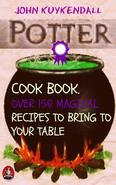Harry Potter's first taste of Hogwarts, as it were, is an eye- opener. While the Dursleys did not completely neglect to feed Harry, they never allowed him to eat as much as he wanted. So at his first Hogwarts feast, for the first time in his short life, he is allowed to eat as much as he likes (see Harry Potter and the Sorcerer's Stone, Chapter 7). Each school year at Hogwarts begins with a celebratory meal in its cavernous Great Hall. No doubt those magnificent meals left an indelible impression on a young Harry, who hungered for more when living with his Muggle relatives: a feeling of kinship and of family that he clearly lacked; a desire to know his clouded past, which had been carefully and deliberately hidden from him at all costs by his duplicitous uncle and aunt, the detestable Dursleys; and most of all, a desire to realize who he truly is, living in two diametrically opposed worlds, the unimaginative Muggle world and the enchanting world of wizards, his true home. Though we Muggles will never get to taste life in the wizarding world, we must console ourselves with sampling the food Rowling writes about so lovingly. In her seven novels, food - breakfast, lunch, dinner, and snacks - plays an important part, an essential ingredient that helps complete our picture of life at Hogwarts. That's especially true for American readers who are largely more familiar with Big Macs and fries at McDonald's than with traditional British cuisine: Black Pudding, Crumpets, Spotted Dick, Kippers, Steak and Kidney Pie, trifles, and other dishes. Fortunately, we Americans do share a commonality with some of the foods mentioned in Rowling's novels and this delightful cookbook. First on that list is ice cream, which of course is universally loved and needs no explanation to Americans. Candy, too, is a universal favorite, though wizards get to enjoy confections not available to Muggles: Jelly Slugs, Fizzing Whizbees, and Fudge Flies, to name a few (see Harry Potter and the


